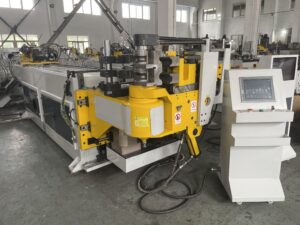
Why Bend Copper Pipe?
Before diving into the “how,” let’s understand the “why.” Bending copper pipe, rather than using numerous fittings and joints, offers several advantages:
- Reduced Leak Points: Fewer joints mean fewer potential leak locations, enhancing system integrity.
- Improved Flow Efficiency: Smooth bends minimize flow resistance, ensuring optimal liquid or gas transfer.
- Neater Aesthetics: Bends provide a cleaner, more professional appearance compared to a jumble of fittings.
- Cost Savings: Fittings can be expensive; bending reduces material costs.
Tools of the Trade: Choosing the Right Bending Tools
The success of your bending project hinges on selecting the appropriate tools. Here’s a breakdown of the most common options:
- Spring Benders: Ideal for smaller diameter pipes (typically up to 15mm), these inexpensive internal springs prevent the pipe from collapsing during bending.
- Handheld Bending Levers: Suitable for larger diameter pipes (up to 22mm), these levers provide more leverage and control, allowing for precise bends.
- Tube Bending Machines: For larger pipes and intricate bends, tube bending machines offer the highest level of accuracy and consistency.
Prepping for Perfection: Essential Steps Before Bending
Proper preparation is crucial for a successful bend. Follow these steps:
- Accurate Measurement and Marking: Carefully measure the required pipe length and mark the bend location precisely. Double-check your measurements to avoid wasted material.
- Annealing (Optional): For harder copper or tight bends, annealing (heating the pipe to a dull red and allowing it to cool slowly) increases its malleability. However, be cautious as overheating can weaken the pipe.
- Choosing the Correct Former (for bending machines): Select the former that matches the desired bend radius. Using the wrong former can lead to kinks or an incorrect bend angle.
Techniques for Smooth Bends: Mastering the Art
The specific bending technique will vary depending on the tools used:
- Using Spring Benders: Insert the spring into the pipe, ensuring it extends beyond the bend point. Gently and evenly apply pressure to bend the pipe around a suitable former (like a knee or a sturdy cylindrical object).
- Using Handheld Bending Levers: Position the pipe within the lever’s jaws and apply steady pressure to create the bend. Work slowly and avoid jerky movements.
- Using Tube Bending Machines: Secure the pipe in the machine, align the former, and slowly engage the bending mechanism. Follow the machine’s instructions for precise angle control.

Avoiding Common Pitfalls: Troubleshooting Your Bends
Even with the right tools and techniques, issues can arise. Here’s how to address common problems:
- Kinks: Kinks occur due to excessive force or an improper bend radius. To avoid them, use the correct tools and work slowly. If a kink forms, it’s often best to discard the pipe and start again.
- Wrinkles: Wrinkles can appear on the inside of the bend. This can be minimized by using a well-fitting former and applying even pressure.
- Incorrect Bend Angle: Double-check your measurements and use an angle gauge to ensure accuracy.
The Finishing Touches: Cleaning and Inspecting Your Work
Once the bend is complete, remove any bending tools and thoroughly clean the pipe. Inspect the bend for any imperfections. If necessary, use a pipe cutter to trim the ends to the desired length.
Beyond the Basics: Advanced Techniques and Considerations
For more complex projects, you might explore advanced techniques like compound bends (multiple bends in the same pipe) or using specialized tools for specific applications. Always prioritize safety and consult with experienced professionals when in doubt.




